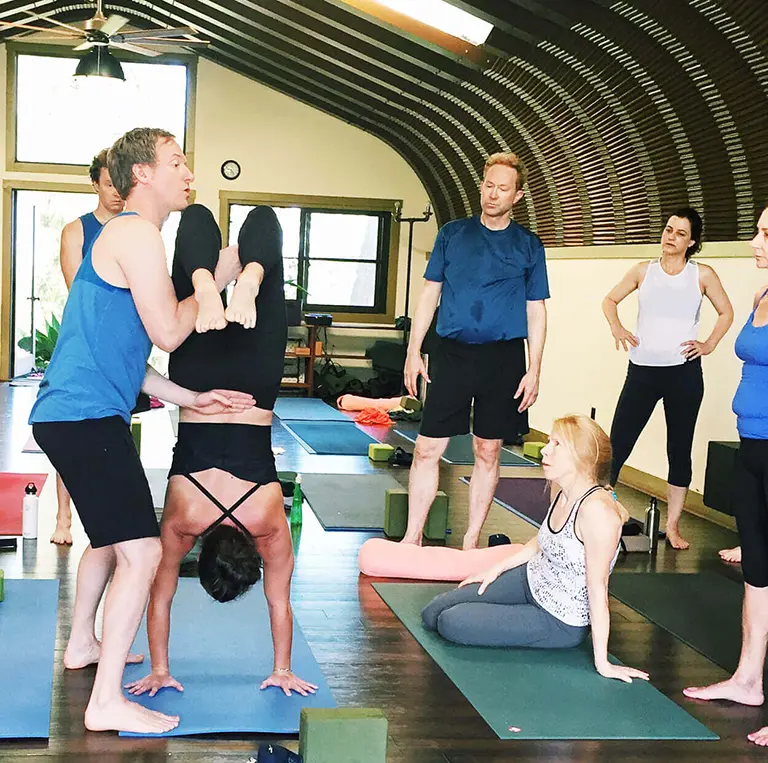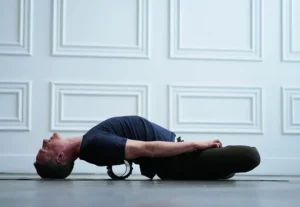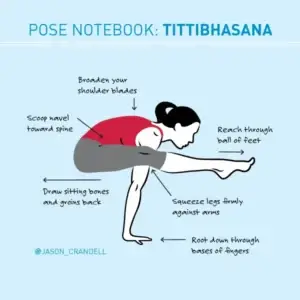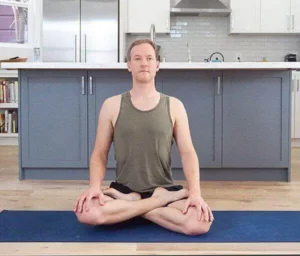The idea of being fearless—on or off the yoga mat—doesn’t resonate with me. Neither does the notion of conquering my fears. I understand and appreciate these concepts, but they don’t feel realistic.
I’d rather change the narrative to this: Instead of trying to live a “fearless” life, I’m trying to live a life where I understand, manage, and respond to my fears with greater compassion and skill. I’m under no illusion that my fears will permanently go away. I am, however, optimistic that I can continue to get better at working through my fears so that they don’t unconsciously control my behavior.
I have countless fears, but I don’t live in fear. There’s a difference. Here’s a partial list: I’m afraid of bees (yep), I’m afraid of turbulence (sweaty palms from takeoff to touchdown), I’m afraid of bodies of water where I can’t see the ground, I’m afraid of losing my loved ones, I’m afraid of failure (hello, therapist), and I’m afraid that my style of teaching will become irrelevant or that teaching yoga will no longer be a viable livelihood for me.
I also get little twinges of fear when I practice deeper backbends like Kapotasana or when I’m getting dropped back into Urdhva Dhanurasana. File both of these under postures I’d rather be teaching than practicing. Fortunately for my wife, I’m not afraid of spiders.
The reason that I’m sharing all of this is because I witness so many students feeling guilty or ashamed when they practice postures that trigger experience fear in the classroom. When we’re afraid to acknowledge and feel our fears, it only makes things worse. Instead of trying to “fake it ‘til you make it” or stuff your fears, I invite you to use yoga room as the perfect place to witness your fears and become more skillful at working through them.
Here’s a step-by-step process for you to try:
1. Accept It
Remember that fear is a normal, natural part of the human psyche. Don’t beat yourself up or feel guilty because you experience fear—everyone has fears except for psychopaths and you don’t want to be a psychopath, do you? Being ashamed of your fears will only inflate them and make you less able to manage them.
It can also lead to feelings of separation, as though you’re the only person in the room with fear and that something is wrong with you. You are never the only person with fear in the room and there is nothing wrong with you. Got it?
2. Demystify It
When you become fearful in your practice, try to drill down and identify what you’re actually afraid of. Let’s say you’re afraid of Handstand. Take another step and try to figure out the specific fear you’re experiencing, such as the fear of falling on your head. Being more objective with your fear will help you start to demystify it. This will begin to lessen the fear. Even more, it will identify the challenge that you’re trying to solve.
3. Ask For Help
Asking your teacher for help does two things: First, you take some of the pressure off of yourself. You reduce the burden that you’ve internalized. (And, no, you’re not adding to your teacher’s burden. This is what we’re here for.) Second, you actually get help when you ask for it! Your teacher might not know that you need a little extra support. When you ask for help, they can usually give you the physical and mental support that you need.
4. Breathe!
Lengthen your exhalations. Lengthening your exhalations will settle you, focus you, and soothe you. Once you’ve lengthened your exhalations, take an “Everything’s gonna be alright” breath. You know what I mean.
5. Use Support
The first wave of support should come from your teacher. Remember, you’re going to ask them for help, right? But, you may also benefit from using more props, like the wall, bolsters, and blankets. If you’re afraid of Handstand, stay at the wall without feeling guilty that you’re not in the middle of the room! If you’re afraid of falling on your face in Bakasana, put a bunch of blankets on the floor in front of you.
6.Don’t Stay Long
Don’t stay long in postures that scare you. Staying too long in stressful situations usually increases aversion. Try staying for a breath or two — it will give you confidence to know that you can do the pose. But if you know that you’re only going to do the pose for a couple of breaths, you’ll be much more willing to repeat it.
7. Rinse and Repeat
Repeat the postures that scare you—for brief periods and with proper support—more frequently. The longer you avoid postures that scare you, the bigger the aversion becomes. Instead, repeat the postures with adequate support as frequently as you can. This repeat exposure—and success in the postures—will help you reframe your relationship to your fear.



